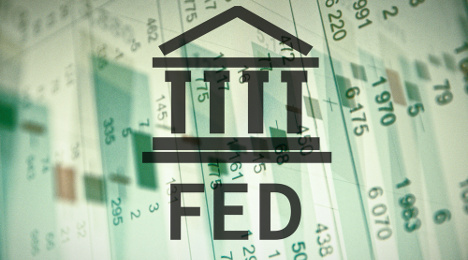Considering what 25 bps interest rate uptick does to subprime activity

By subscribing, you agree to receive communications from Auto Remarketing and our partners in accordance with our Privacy Policy. We may share your information with select partners and sponsors who may contact you about their products and services. You may unsubscribe at any time.
CARY, N.C. –
Comerica Bank explained why it continues to expect the Federal Reserve to increase the effective range of the Fed funds rate by 25 basis points on Wednesday. Analysts indicated the Fed funds futures market placed an implied probability of 97.2 percent on the event.
“Fed officials have done nothing to counter the very strong market expectation,” Comerica Bank said in its most recent economic commentary.
So what does an interest rate move this late in the year mean for auto financing, especially for companies that participate in the subprime space? Jason Laky, senior vice president and automotive and consumer lending business leader for TransUnion, addressed the topic with SubPrime Auto Finance News on Tuesday morning.
“Remember the impetus for the rise in interest rates right now is that it is generally believed that central bankers have an optimistic view of the economy right now,” Laky said. “We’re continuing to get momentum. There are lots of strengths. When you start to see interest rate increases, it’s usually a really good sign for the economy so I think the positive impact for employment wage gains and consumer consumption fare outweighs the quarter basis point increases.
“From a financing perspective, when we see an interest rate increase, there are a couple of things,” he continued. “One, a 25-basis-point increase in and of itself that’s passed through to the consumer is only a few dollar per payment difference. One uptick doesn’t make that big a difference.
“However, what it starts to do as more rate increases happen, for subprime consumers that probably means they have less ability to borrow when they go out to get a car,” Laky went on to say. “The subprime consumer tends to be more payment constrained so they can only afford a certain amount per month to pay for a vehicle. As you raise interest rates, that translates into a little bit less that you can finance.”
Subscribe to Auto Remarketing to stay informed and stay ahead.
By subscribing, you agree to receive communications from Auto Remarketing and our partners in accordance with our Privacy Policy. We may share your information with select partners and sponsors who may contact you about their products and services. You may unsubscribe at any time.
Laky also mentioned what could happen in higher credit tiers if the Fed altered interest rates more often than perhaps twice per year.
“The prime consumer, particularly the super-prime, it’s a little bit of the opposite effect in that many super-prime consumers have the option to either finance or pay cash,” Laky said. “As interest rates increase, those special finance offers like 0 percent or 0.9 percent, those aren’t quite as low and more super-prime consumers will choose to pay cash.
“So you might see overall sales not change a lot but you may see financing decrease a little in the super-prime space and you might see the amounts financed decrease a little bit in subprime,” he added.
Stifel chief economist Lindsey Piegza agreed with Comerica Bank’s assertions about what the Fed is likely to do this week. But Piegza spotted another potential issue.
“A second-round interest rate increase at (this) week’s FOMC meeting has essentially been fully priced into the market. But while another 25-basis-point hike come (Wednesday) is essentially baked into the cake, what happens next in terms of the longer-term trajectory of policy remains a large question mark,” she said.
“The Fed has a long history of miscommunication with the market and will likely continue to struggle to communicate the next stage of monetary policy as we turn the corner into 2017, particularly against the backdrop of heightened expectations for a pro-growth Trump administration buoying economic conditions near-term,” Piegza continued.
With an interest rate move more than likely, Comerica Bank closed by emphasizing what else the Fed is likely to share this week.
“The most interesting new element of the Fed’s upcoming policy announcement will be how it guides expectations for 2017,” Comerica Bank analysts said. “We will get a new set of economic forecasts from the Fed, and a new dot plot. The dot plot shifted down through 2016. We will watch to see if it shifts again.”


